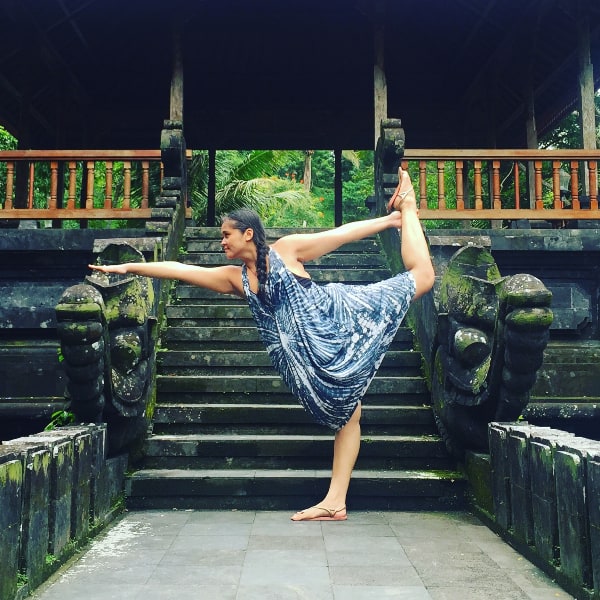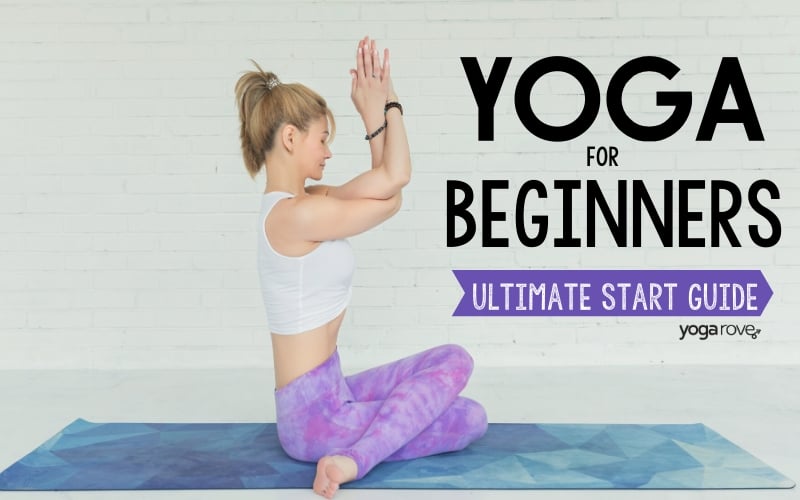This post may contain affiliate links. Please read our disclosure for more info.
One of yoga’s most advanced backward bends, Wheel pose or Upward Facing Bow, is a deep backbend. In Sanskrit, the posture is known as Chakrasana. The word ‘chakra’ is translated to wheel which is fitting since you bend your body to look like a wheel!
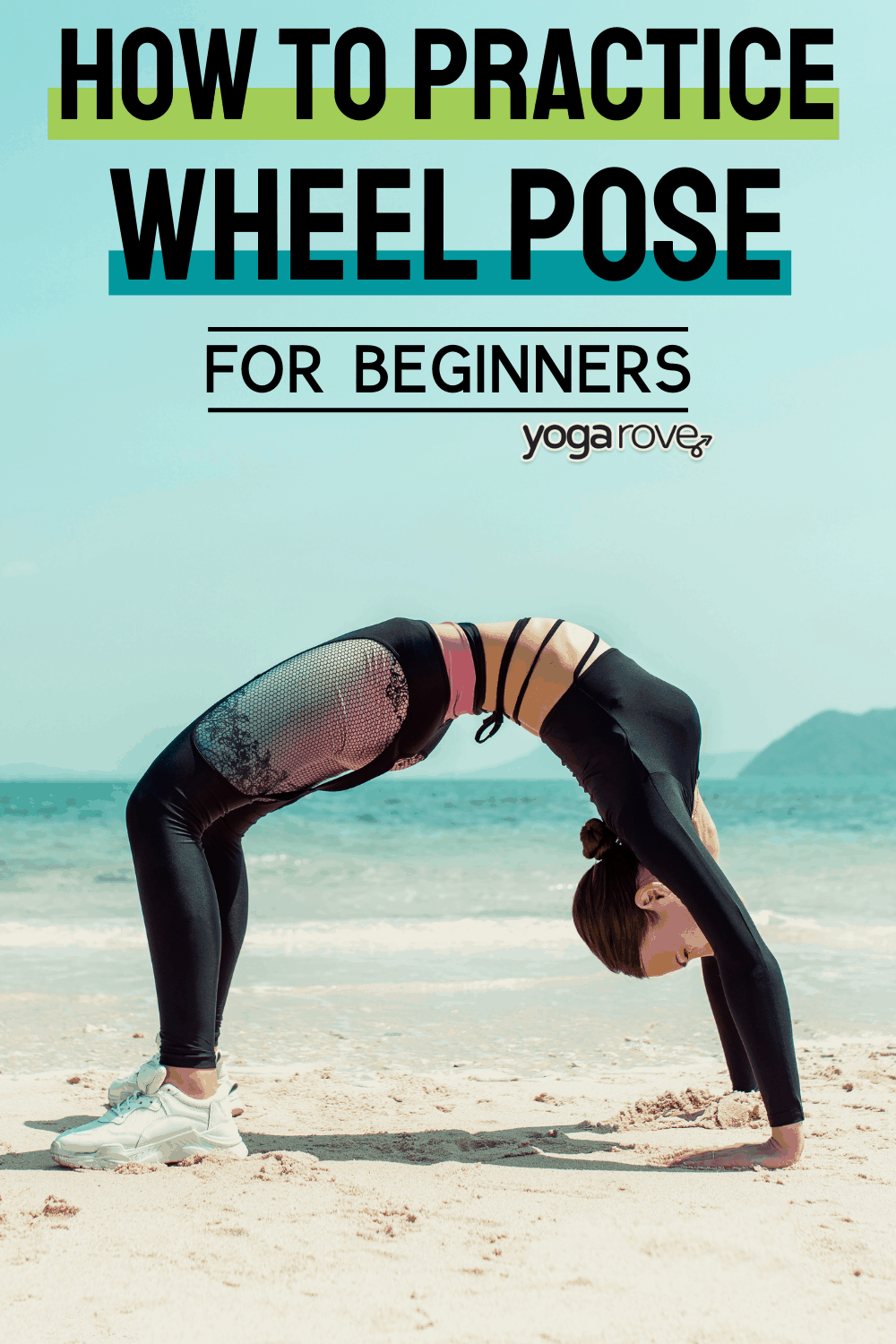
Wheel pose can be challenging as a new yogi, but know that with practice and patience, no posture is out of reach. You can also practice the posture with modifications and props, and still reap its numerous benefits. This deep backbend is energizing, strong, heart-opening, and fun to practice!
Benefits of Wheel Pose
Wheel pose is so beneficial for both the physical body and your mind. It can directly benefit many systems in your body. Here are some of Wheel pose’s benefits:
- Opens your heart and your lungs: As a ‘heart opener’, it stimulates your cardiovascular system It can aid in relieving asthma symptoms as you open and stretch the accessory breathing muscles. Because you are opening your chest so wide, oxygen flow increases and respiration improves.
- Strengthens your spine’s vertebrae: As you arch back and stretch your entire column, you open space between your vertebrae. This will help the elasticity of all the bones and joints in your back. It can also help spinal stenosis and even scoliosis.
- Increases flexibility: Wheel pose opens tight hips. In modern-day society, we spend a lot of time sitting down in front of a computer, and our hips easily tighten. This pose will extend the hip flexors and make you feel good after long days at the office.
- Has positive effects to battle depression, reduce stress and anxiety, and increase mental and physical energy
Warming Up for Wheel Pose
The best time to move into this backbend is usually toward the end of your yoga practice. Your body and your spine will be warmed up and open, preparing you for this deep backbend. Wheel pose requires a certain degree of mental and physical flexibility. If you have a tight chest or upper back, try focusing on opening your heart before practicing Wheel pose.
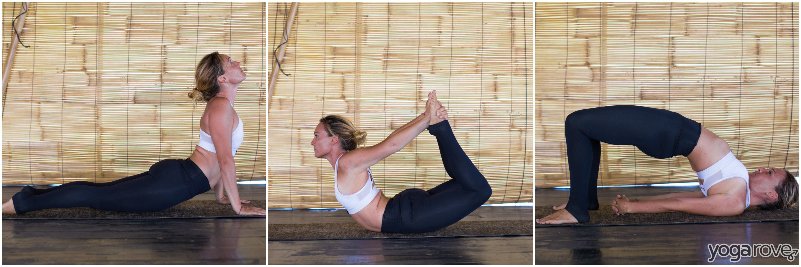
Upward Dog
Usually practiced during your Sun Salutation, Upward Dog can also be practiced on its own.
- Start on your belly. Place your palms in front of you and spread your fingers wide on the mat. Begin shift slightly forward and push down on your hands to lift your chest and hips of the mat.
- Let the tops of your feet rest on the mat and your toes point straight back.
- Roll your shoulders up, back, and down and lift your chest up.
- Relax your shoulders away from your ears and push your shoulder blades together.
- Keep your chin down slightly and gaze forward.
- Spread your fingers wide and push the mat away from you. Stay for 5 deep breaths.
Bow
This backbend resembles the Wheel pose in some ways, however, it is practiced on your belly.
- Start on your belly and bend both of your knees to lift your feet off the floor.
- Grab onto your ankles from your baby toe side. Your thumbs should be on the inside of your ankles.
- Take your knees together to begin and straighten your arms.
- On your inhale, lift your upper body off the mat as you kick your heels away from your body.
- Keep your arms straight and keep your legs strong.
- Roll your weight forward to the soft part of your belly, relax your shoulders, and shift you gaze forward or slightly upward.
- Stay for 5 deep breaths and gently come down.
Bridge
Many yoga instructors will warm up to wheel pose with some bridge poses. This is a great hip opener and a wonderful warm-up pose to Wheel pose.
- Lie down your back with your feet flat on the floor hips-width distance apart.
- Make sure that your fingertips can lightly touch your heels and that your toes are pointing straight forward.
- On your inhale, lift your hips up off of the mat as you ground down with your heels.
- Interlace your fingers behind your body. Squeeze your palms together and squeeze your shoulder blades together.
- Lift your hips and chest up, root down with your heels, and stay for 5 deep breaths.
How to Practice Wheel Pose
Before you come into your Wheel pose, make sure that you warm up properly with a few backbends that aren’t as intense. It is a great idea to start with Bridge pose and if you feel stable, you can make your way into Wheel pose.
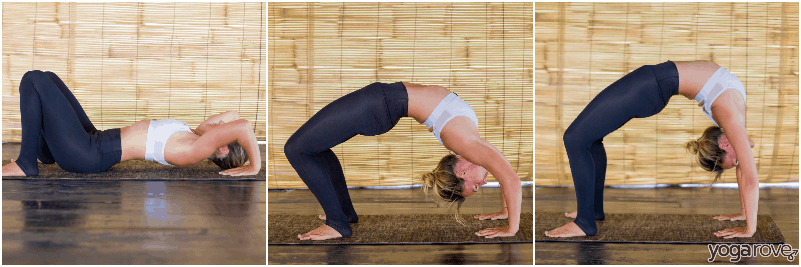
To practice Wheel pose:
- Lie down your back with your feet flat on the floor hips width distance apart.
- Make sure that your fingertips can lightly touch your heels and that your toes are pointing straight forward.
- Place your palms flat on the floor close to your ears. Your fingertips should be pointing toward your shoulders.
- Spread your fingers wide on the mat and root your heels down for a strong foundation.
- On your inhale, press down with your heels and your hands. Lift your hips up and place the crown of your head on the mat.
- Readjust your hands and your feet if you need to. Make sure your foundation is strong and hug your elbow in toward each other.
- Push your hands down on the mat and lift your head off the mat.
- Keep lifting your hips up, relax your head back, and keep pressing your heels and hands onto the mat.
- Straighten your arms and think of your heart moving toward the back wall.
- Stay for 5 deep breaths.
Common Misalignments
It’s super important in this backbend to find the proper alignment. If it’s challenging to do so, and you find your body moving around in the pose, practice with a block in between your inner thighs.
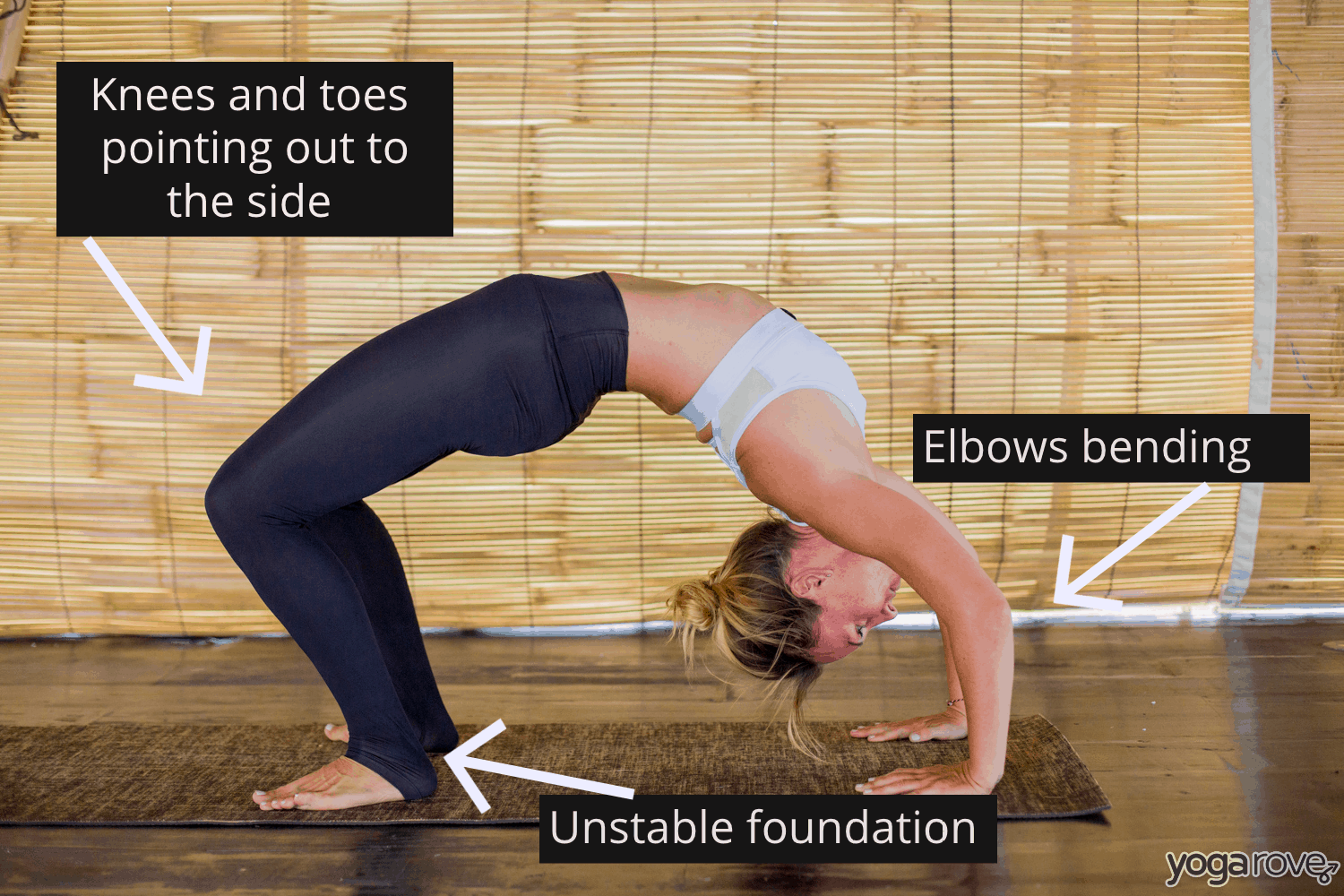
Common misalignments include:
- Toes pointing to the side instead of straight forward
- Bent elbows.
- Knees and elbows pointing out to the side
- Unstable foundation on the hands and the feet
Modifications
Wheel pose can take some time to work up to. However, it doesn’t mean that you can’t practice the pose. Modify with props until you are ready to lift up into the deeper backbend.
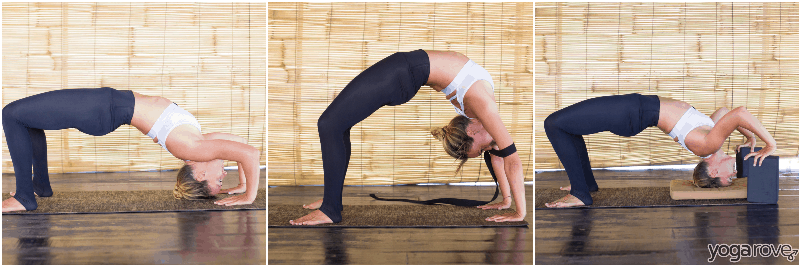
- Practice with your head on the ground: Don’t feel comfortable to lift your head off the ground just yet? Practice Wheel pose with your head on the mat and focus on your alginment. Think of hugging your elbows and knees in toward each other and spread your fingers wide on the mat.
- Use a strap: If you notice that your elbows splay out to the side when you are in the posture, use a strap around your arms. Create a hoop with the strap and tighten as needed before coming up into Wheel pose. Make sure that it isn’t too loose and that you are able to keep the proper alignment with your elbows.
- Use blocks: For an extra lift, add blocks underneath your hands. Try with your head on the mat first, and focus on the alignment of your entire body.
Tips for Beginners
- Be mindful of discomfort: Wheel pose can be challenging so make sure that you arent forcing your body to go anywhere. If you feel a sharp pain, back off from the pose and try a supported version first.
- Take time to build flexibility: This deep backbend requires flexibility in your entire body. As a new yogi, it can take time to build flexibility. Be patient and consistent with your practice and work on hip and heart openers.
- Practice supported Wheel pose first: Supported wheel with a block or bolster can feel amazing! Try this out first to open up your body, and slowly work your way into the full posture.
Variations in Wheel Pose
Feeling comfortable in your Wheel and want to try some variations? Here are 2 fun ones that you can try:
- One-Legged Wheel: Once you are in your Wheel pose, shift your weight to your right leg. Bend your left knee in toward your chest and lift your left foot off the floor. Extend your leg up toward the ceiling and point your toes. Stay for a few breaths and repeat on the opposite side.
- Wheel on Elbows and Head: From your Wheel pose, gently lower the crown of your head back down onto the mat. Instead of keeping your palms down, take your forearms down on the mat and interlace your fingers at the crown of your head. Shift your weight slightly more toward your forearms to open your chest.
Contraindications
It is recommended to take caution or avoid Wheel pose if you are experiencing:
- Heart problems
- Carpal tunnel syndrome
- Diarrhea
- Low or high blood pressure
- Recurring back injuries
- Headaches
- Shoulder impingements
You can always ask your yoga teacher for a modified variation or practice a different backbend altogether!
Wheel pose is no doubt a challenging posture. With consistent practice to open your body and increase your flexibility, you can find that it gets more accessible with time. Backbends can feel so heart-opening and energizing, and Wheel pose is definitely one that you do not want to skip on!


